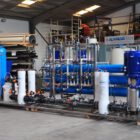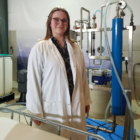Activated carbon
Activated carbon is a porous carbon material widely used in industrial water and wastewater treatment to adsorb dissolved organic contaminants, odors and flavors as well as pollutants such as heavy metals and micropollutants. Due to its high internal surface area and excellent adsorption properties, activated carbon is used as a filter medium to remove pollutants from








